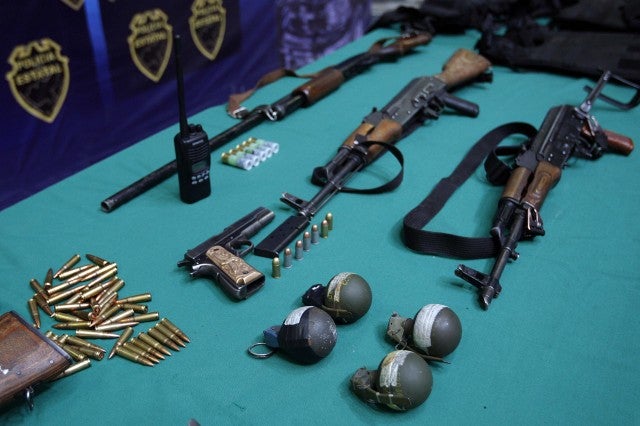Documents Show ATF Bought Guns with Taxpayer Money to Give to Drug Cartels
Lachlan Markay /
New revelations in the ongoing Fast and Furious investigation show that the Bureau of Alcohol, Tobacco, Firearms and Explosives (ATF) used taxpayer money to buy assault weapons that they then passed on to Mexican drug cartels. Sources have also claimed that ATF superiors ordered surveillance teams to stop tracking weapons once they were in the cartels’ possession.
In June 2010, according to documents obtained by Fox News, undercover ATF Special Agent John Dodson purchased six AK-style CAI Draco 7.62x39mm handguns with cash provided to him by the ATF. Under orders from superiors, he then delivered the weapons to an agent for a Mexican drug cartel, with the understanding that that agent would remove the weapons’ serial numbers and bring them into Mexico.
David Voth, ATF’s group supervisor in Phoenix, signed off on the operation and even provided a signed letter for Dodson to show proprietors of a pair of gun stores where the weapons were purchased. The guns “will be used by…Dodson in furtherance of his official duties,” Voth’s letter states.
Fox also reports that Voth explicitly obstructed surveillance efforts designed to track the six weapons he had authorized Dodson to purchase and hand off to cartels.
According to sources directly involved in the case, Dodson felt strongly that the weapons should not be abandoned and the stash house should remain under 24-hour surveillance. However, Voth disagreed and ordered the surveillance team to return to the office. Dodson refused, and for six days in the desert heat kept the house under watch, defying direct orders from Voth.
A week later, a second vehicle showed up to transfer the weapons. Dodson called for an interdiction team to move in, make the arrest and seize the weapons. Voth refused and the guns disappeared with no surveillance.
These revelations are important, since they undercut a pair of official narratives regarding ATF’s role in the Fast and Furious operation.
1. ATF was a passive observer, simply tracking weapon purchases and transportation that would have taken place in their absence. There were some instances of gun store owners being given the go-ahead by federal officials determined to see guns fall into the hands of cartel operatives, but ATF involvement never reached the level of actually buying the guns and handing them off to cartels – until now.
2. ATF made its best efforts to track weapons once they fell into cartel hands, but simply didn’t have the resources. These revelations show that, at least in some instances, ATF officials themselves suspended surveillance of individuals transporting Fast and Furious guns into Mexico.
These facts will likely spark more questions about the operation and ATF’s role in it. Look for two groups to be asking a whole lot more questions of the Bureau during the coming week: the Mexican government, which is already furious and will likely wonder why the federal government would ever purchase weapons for a cartel; and congressional investigators, perhaps more likely to get answers to that question.

